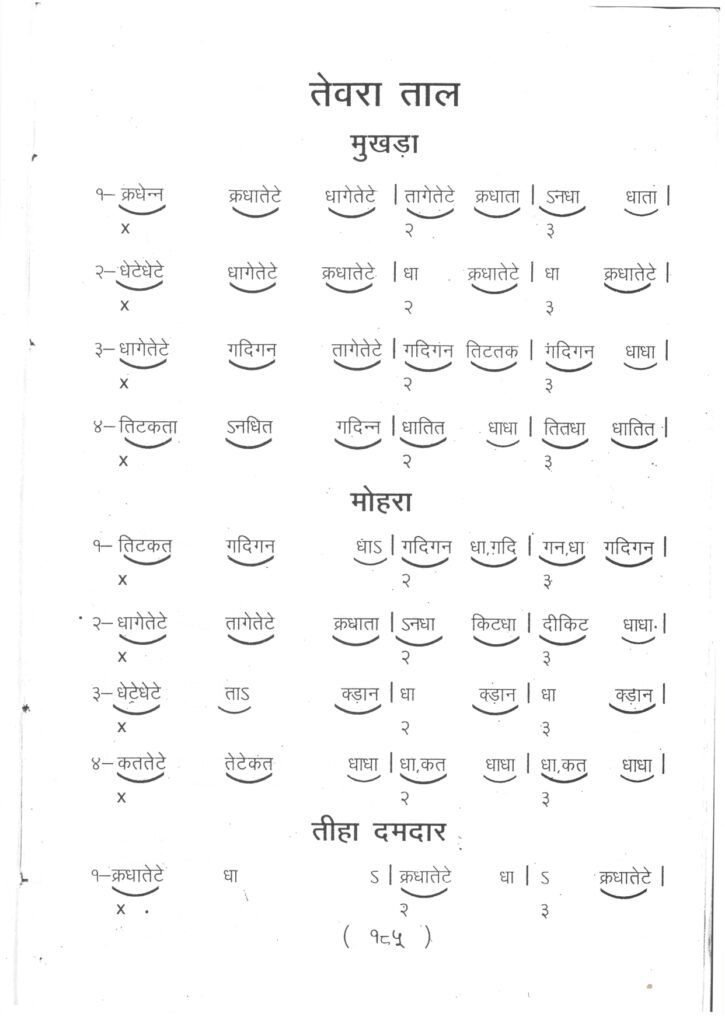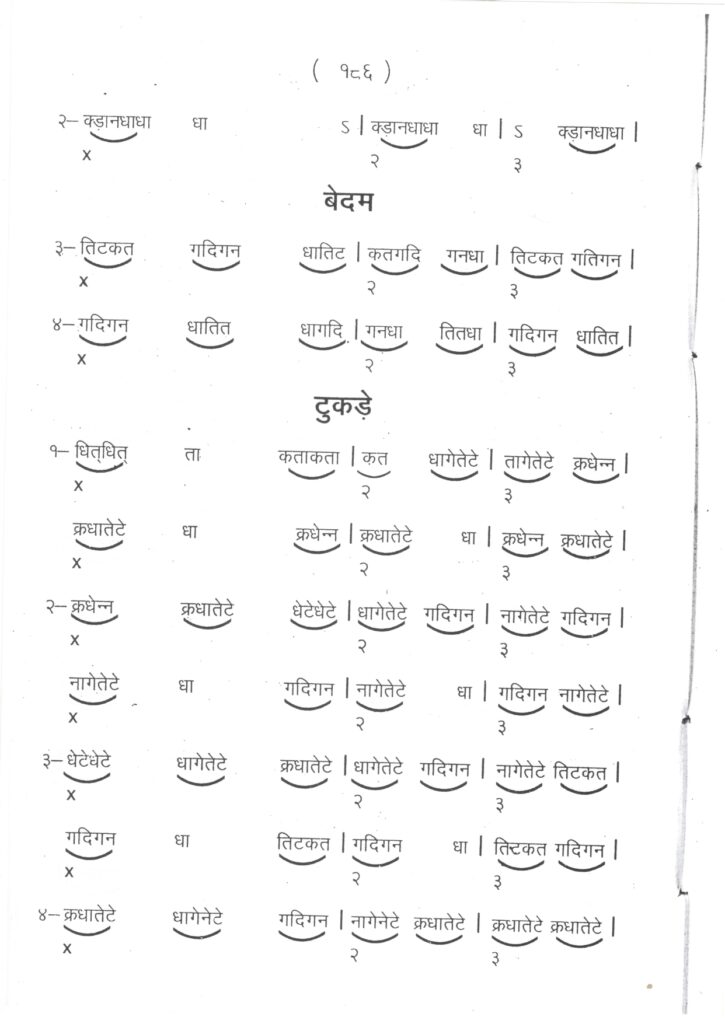Introducing the-Tevra Taal (7 Beats) Explained: Powerful Mukhda, Mohra, and Damdaar Tihai for Tabla Lovers! Master the 7-Beat Tevra Taal: Stunning Tabla Compositions – Mukhda, Mohra, Bedam & Tihai, “Feel the Rhythm of Tevra Taal (7 Matras) | Explosive Tabla Tukra, Mohra & Damdaar Tihai! Unleashing the Power of Tevra Taal: Mesmerizing 7-Beat Tabla Patterns (Mukhda to Tihai) Tevra Taal Breakdown: Learn 7-Beat Tabla Patterns – Mukhda, Mohra, Damdaar Tihai & More.
Introduction: The Magic of Seven Beats
In the world of Indian classical rhythm, every taal (rhythmic cycle) tells a story. Among the rare and captivating taals stands Tevra Taal, a 7-beat rhythmic cycle that challenges even seasoned tabla players. Unlike the more commonly heard Teentaal (16 beats) or Rupak (7 beats with a different structure), Tevra Taal carries a unique symmetry and pulse that feels both playful and profound.
Whether you are a tabla learner, performer, or rhythm enthusiast, understanding Tevra Taal opens a new rhythmic dimension where mathematics and melody meet magic.



Historical Context: Ancient Roots, Modern Resonance
The word Tevra comes from the Sanskrit root Teevra, meaning “sharp,” “intense,” or “fast-moving.” This perfectly describes the taal’s dynamic and crisp structure.
Historically, Tevra Taal was used in Dhrupad and Khayal traditions, particularly in fast-paced compositions (drut laya). Over centuries, tabla maestros have evolved complex patterns within this taal, making it a rhythmic playground for improvisation.
Ustads like Pandit Kishan Maharaj, Ustad Zakir Hussain, and Pandit Anindo Chatterjee have showcased Tevra’s intricate beauty in their live performances, often blending it with fusion, ghazal, and dance accompaniments.
Understanding the Structure: The 7-Beat Cycle
Tevra Taal is composed of 7 beats (matras), divided as 3 + 2 + 2. Its theka (basic pattern) is played as:
Dha Dhin Na | Dha Tu Na | Ta Dhin Na
Let’s break this down:
| Vibhaag | Beats | Bols |
|---|---|---|
| 1 | 3 | Dha Dhin Na |
| 2 | 2 | Dha Tu |
| 3 | 2 | Na Ta Dhin Na |
The first beat (Dha) marks the Sam – the most emphasized point in the cycle, where compositions begin or resolve.
The subtle grouping of 3-2-2 gives Tevra a flowing, uneven symmetry that keeps listeners guessing yet entranced.
Mukhda, Mohra, and Damdaar Tihai – The Soul of Tevra
To appreciate Tevra fully, one must explore its essential components: the Mukhda, Mohra, and Tihai.
🎶 Mukhda – The Rhythmic Face
Mukhda literally means “face” — it introduces the composition’s theme. In Tevra, a typical Mukhda might sound like:
Dha Dhin Na Dha Tu Na | Ta Dhin Na | Dha Dhin Na Dha Tu Na | Ta Dhin Na
This short phrase beautifully lands back on the Sam (first beat), creating a satisfying rhythmic closure.
🎵 Mohra – The Connector
The Mohra acts as a transition, connecting one section of a performance to another — much like a bridge in a song.
In Tevra, the Mohra is often a slightly elongated pattern that signals an upcoming tihai or composition. It builds energy and anticipation, allowing both the performer and audience to prepare for the climax.
Example:
Dha Ge Na | Dha Tu Na | Ta Dhin Na | Dha Ge Na Dha Tu Na | Ta Dhin Na
🌀 Damdaar Tihai – The Powerful Finale
A Tihai is a rhythmic phrase repeated three times to land exactly on the Sam.
A Damdaar Tihai (literally “powerful tihai”) adds extra force and flourish. In Tevra, executing a Damdaar Tihai requires precise calculation due to the 7-beat cycle.
Example:
Dha Dhin Na Dha Tu Na Ta | Dha Dhin Na Dha Tu Na Ta | Dha Dhin Na Dha Tu Na Ta (Sam)
This repetition builds excitement and concludes the composition with a thunderous return to the Sam, earning nods and applause from the audience.
Famous Performances & Learning Resources
Many maestros have explored Tevra Taal in both classical and contemporary forms.
- Ustad Zakir Hussain has performed Tevra variations in live jugalbandis.
- Pandit Yogesh Samsi and Pandit Swapan Chaudhuri have taught Tevra compositions in workshops.
- On YouTube, channels like Indian Classical Rhythm Tutorials and Tabla by Vivek feature practical breakdowns for learners.
🎧 Listen to this example:
Tevra Taal Tabla Solo r Shree Bhagwan Singh (YouTube)
Cultural & Global Impact
Today, the 7-beat rhythm of Tevra has crossed traditional boundaries. It appears in fusion, film, and world music, blending seamlessly with jazz, electronica, and even hip-hop.
For instance, modern Indian composers like A.R. Rahman and Shankar–Ehsaan–Loy have subtly infused 7-beat and odd rhythmic cycles in their film soundtracks. The result? A global audience now feels the pulse of Indian rhythm, even without realizing it.
Interactive Element: Quick Rhythm Challenge
🧩 Quiz:
How many matras does Tevra Taal have?
A) 6 B) 7 C) 8
(Answer: B – 7 beats!)
💬 Poll:
What’s your favorite tabla composition type?
- Mukhda
- Mohra
- Tihai
- Tukra
Vote and share your thoughts in the comments below!
Conclusion: The Future of Tevra
Tevra Taal, with its odd-time beauty and mathematical precision, continues to inspire generations of tabla players. It represents balance, creativity, and rhythm’s limitless potential.
Whether you’re practicing your first theka or composing an advanced tihai, let Tevra remind you that rhythm is both science and soul.
https://www.facebook.com/sbsinghtablaguru
https://www.youtube.com/@BhagawanSingh
